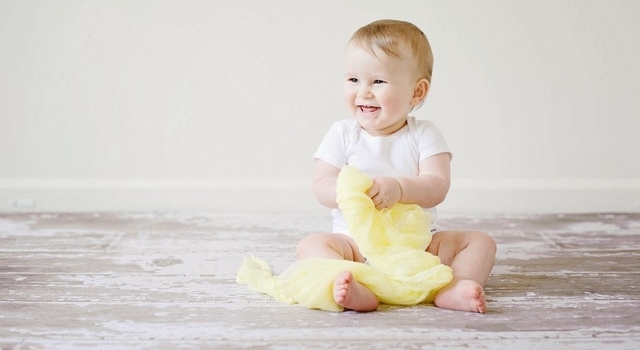Babies and toddlers who do not have healthy eyes may not be able to reach their developmental milestones.
All babies should have their eyes examined when they reach 6 months.
Babies depend heavily on their vision to explore and learn about the world around them. Many people are unaware that vision, like walking and talking, is a learned ability and your baby’s eyes benefit from visual stimulation.
That’s why it’s so important to make sure your child’s eyes and vision are developing normally. Parents and caregivers should be aware of the warning signs mentioned below, as they may indicate the need to see an optometrist.
Schedule an eye exam with an eye doctor near you to make sure your baby’s eyes are developing properly.
SEE RELATED: Vision Problems and Babies: Part 2 Q&A
Signs That May Indicate a Vision Problem In Infants
The following signs and symptoms may indicate your baby has a vision problem:
- Difficulty maintaining eye contact
- Excessive tearing or watery eyes
- Extreme light sensitivity
- Eye pain or discomfort that doesn’t resolve
- Eyes that rapidly move from side to side or up and down
- Eye turn, when one eye turns inward, outward, up or down
- Persistent eye redness
- Squinting or head tilting
- Very droopy eyelids
- White or grayish coloring in the pupil
Schedule an appointment with an eye doctor near you who can evaluate your baby’s eyes.
Visual Milestones
The visual milestones mentioned below are vital to achieve as your baby grows into a toddler during the first two years of life.
0-4 Months
When babies are born, they are usually able to focus on objects that are about 9 inches away (the distance between their eyes and their parent’s face while being held).
After a few months, a baby’s vision develops quickly, enabling them to monitor moving objects with their eyes and begin to learn hand-eye coordination.
If you find that your newborn’s eyes tend to be crossed or that one eye turns outward at times, this is usually nothing to worry about and will likely go away as their visual system progresses.
Important:, if you notice anything unusual, schedule an appointment with an eye doctor near you.
After 3 to 4 months, babies should be able to reach for things and track moving objects.
5-8 Months
Babies begin to see the world in 3 dimensions at around 5 months. Color and depth perception are new visual skills that evolve during these months.
Most babies start to learn to crawl at this age. Crawling helps a baby’s hand-foot-body coordination while also strengthening their visual system. When they crawl, babies look up into the distance, then down at their hands, then back up again.
Binocular vision and hand-eye coordination are improved by constantly changing their points of focus in coordination with their own movement.
9-12 Months
At this age, a baby should be able to pick up small objects with their thumb and forefinger.
Most babies may also attempt to pull themselves to a standing position. They may even try to walk. Encouraging a child to crawl as soon as possible can help them develop hand-eye coordination and binocular vision.
A baby of this age should also have a good sense of distance.
12-24 Months
Typically, by the age of 2, hand-eye coordination is well developed. Toddlers this age are able to point out objects in a picture book and recognize faces.
What Can Parents Do For Their Baby’s Visual Health?
In order to develop a healthy visual system, babies need visual stimulation. Parents should engage in age-appropriate activities that will boost their child’s visual development.
Ways to help with visual development include:
- Providing plenty of free play with toys on the floor
- Talking to your baby as you walk around the room to help develop their visual tracking skills
- Reading books and pointing to objects
- Giving your child building blocks and balls that support visual spatial skills and fine motor skills.
LEARN MORE: Guide to Visual Development
If your baby is nearly 6 months old, or if you suspect a visual problem whatever your child’s age, schedule an evaluation with an eye doctor near you.
The earlier any visual problems are diagnosed, the better the outcome.

